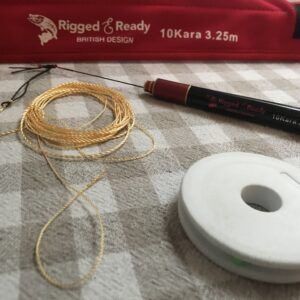Tenkara Fly Fishing: A Journey from Ancient Japan to Modern Popularity
Tenkara fly fishing, an ancient Japanese angling technique, has captured the fascination of modern-day fishing enthusiasts worldwide.
With its minimalistic approach, rich history, and increasing popularity, fishing with a tenkara rod offers a unique and rewarding experience. This article delves into the origins, evolution, and contemporary appeal of tenkara fishing, highlighting its significant impact on the angling community.
Origins and History of Tenkara Fishing
Tenkara fishing traces its roots back to the mountainous regions of Japan over four centuries ago. The word “tenkara” translates to “from heaven” in Japanese, reflecting the technique’s simple and elegant nature. Unlike traditional fly fishing, tenkara utilizes a long, telescopic rod without a reel, a fixed line, and a single fly. This method was originally developed by Japanese commercial fishermen who needed an efficient way to catch fish in the fast-flowing streams of the mountains.
The simplicity and effectiveness of tenkara made it a favored technique among local fishermen. The long rods allowed for precise casting and easy manipulation of the fly, making it ideal for catching the elusive trout in the clear, cold waters of Japan’s mountainous streams. The method was passed down through generations, evolving slowly but maintaining its core principles of simplicity and efficiency.
Key Components and Techniques of Tenkara Fishing
The traditional tenkara setup consists of three main components: the rod, the line, and the fly. The rod is typically made from lightweight, high-quality carbon fiber, allowing for ease of use and precise control. The length of the rod can vary, usually between 11 to 14 feet, enabling anglers to reach distant spots without the need for a reel.
The line in tenkara fishing is either a tapered monofilament or a level line, often made of fluorocarbon, which helps in maintaining a delicate presentation of the fly. The fly, or “kebari,” is a simple yet effective lure tied with a variety of materials, designed to mimic aquatic insects. Unlike Western fly fishing, where specific fly patterns are meticulously followed, tenkara flies often have a more generic appearance, relying on the angler’s skill to entice the fish.
The technique of tenkara fishing emphasizes a delicate and precise presentation of the fly. Anglers use a variety of casting methods, including the “bow and arrow” cast, to navigate tight spaces and present the fly accurately. The fixed line system allows for a direct connection between the angler and the fly, providing excellent feedback and control over the fly’s movements.
The Rise of Tenkara in the Western World
Tenkara fishing remained relatively unknown outside Japan until the early 2000s when it began to gain attention in the Western world. The simplicity and effectiveness of tenkara appealed to anglers seeking a more minimalist approach to fly fishing. In 2009, Daniel Galhardo founded Tenkara USA, the first company dedicated to introducing tenkara to the American market. His efforts played a crucial role in popularizing the technique and making tenkara equipment readily available to a broader audience.

The rise of tenkara in the West can be attributed to several factors. First, the simplicity of tenkara makes it accessible to beginners, eliminating the need for extensive gear and technical knowledge. The minimalist approach also resonates with those looking to simplify their fishing experience and connect more directly with nature. Additionally, tenkara’s effectiveness in small streams and tight spots has made it a favorite among anglers who fish in such environments.
Modern Popularity and Community
Today, tenkara fly fishing has become a global phenomenon, with a growing community of enthusiasts and dedicated events. Social media platforms, online forums, and dedicated websites have facilitated the exchange of knowledge and experiences among tenkara anglers worldwide.
The annual Tenkara Summit, organized by Tenkara USA, gathers enthusiasts to share techniques, stories, and celebrate the tenkara tradition.
The minimalist nature of tenkara has also influenced the broader fly fishing industry, inspiring innovations and a renewed focus on simplicity and efficiency. Many traditional fly fishing companies have started to incorporate tenkara rods and accessories into their product lines, recognizing the growing demand for this unique approach.
Environmental and Ethical Considerations
Tenkara’s emphasis on simplicity and minimalism aligns with the principles of environmental stewardship. The use of fewer materials and the lightweight nature of the equipment reduce the environmental impact of manufacturing and transportation. Additionally, tenkara anglers often practice catch and release, promoting the conservation of fish populations and their habitats.
The community also places a strong emphasis on respecting nature and preserving the natural environment. Many tenkara anglers are involved in conservation efforts, advocating for clean water, sustainable fishing practices, and the protection of wild fish populations. This environmental consciousness has further contributed to the appeal of this fishing method, attracting those who are passionate about both fishing and environmental conservation.
Conclusion
Tenkara fishing, with its rich history and minimalist approach, has captured the hearts of anglers around the world. From its origins in the mountains of Japan to its rise in popularity in the Western world, tenkara offers a unique and rewarding fishing experience. The technique’s simplicity, effectiveness, and alignment with environmental principles have made it a favorite among both beginners and experienced anglers. As the tenkara community continues to grow, this ancient method of fishing remains a timeless and cherished tradition, connecting people to nature and the art of fishing in its purest form.






